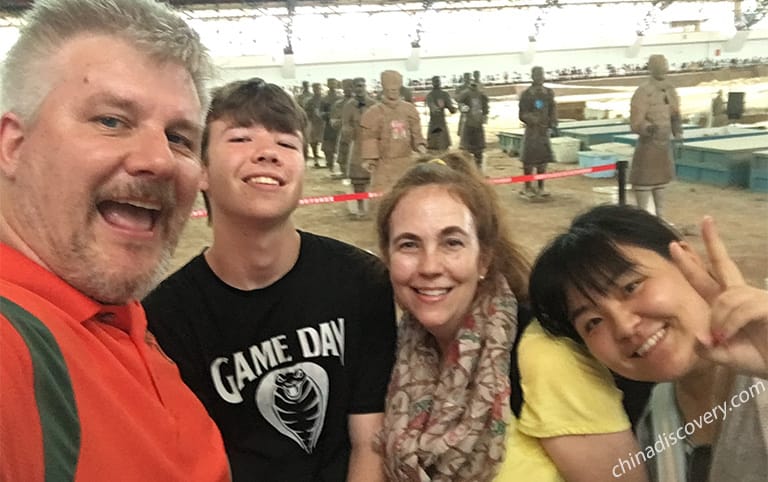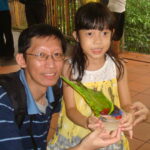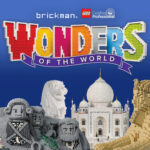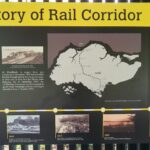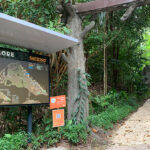The Terracotta Army is a collection of terracotta sculptures depicting the armies of Qin Shi Huang, the first Emperor of China. It is a form of funerary art buried with the emperor in 210–209 BCE with the purpose of protecting the emperor in his afterlife.
The figures, dating from approximately the late third century BCE, were discovered in 1974 by local farmers in Lintong County, outside Xi’an, Shaanxi, China. The figures vary in height according to their roles, the tallest being the generals. The figures include warriors, chariots and horses. Estimates from 2007 were that the three pits containing the Terracotta Army held more than 8,000 soldiers, 130 chariots with 520 horses, and 150 cavalry horses, the majority of which remained buried in the pits near Qin Shi Huang’s mausoleum. Other terracotta non-military figures were found in other pits, including officials, acrobats, strongmen, and musicians. To Chinese people, the social structure in the afterlife is exactly like that in the real world, especially in Qin Dynasty, the people regarded the death same as the life. Without question, The First Qin Emperor would like to build a similar empire for his afterlife at any cost. According to historical materials, there exist sun, moon, stars, rivers, mountains in his mausoleum. To protect the empire of his afterworld, an army could be a must. The Terracotta Army was concluded one of the parts of the Mausoleum of the First Qin Emperor. (Source from Wikipedia)


Terracotta Village
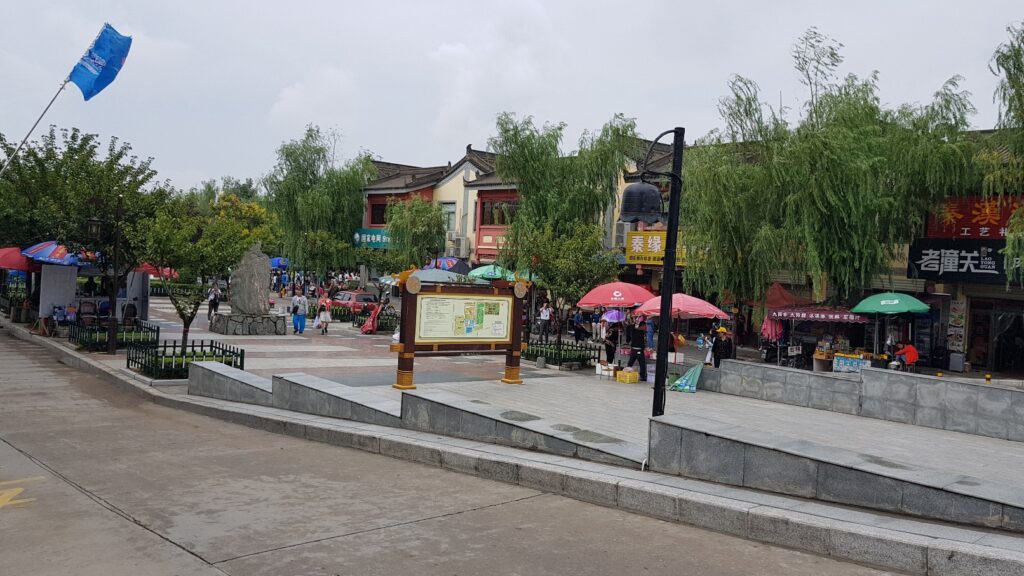



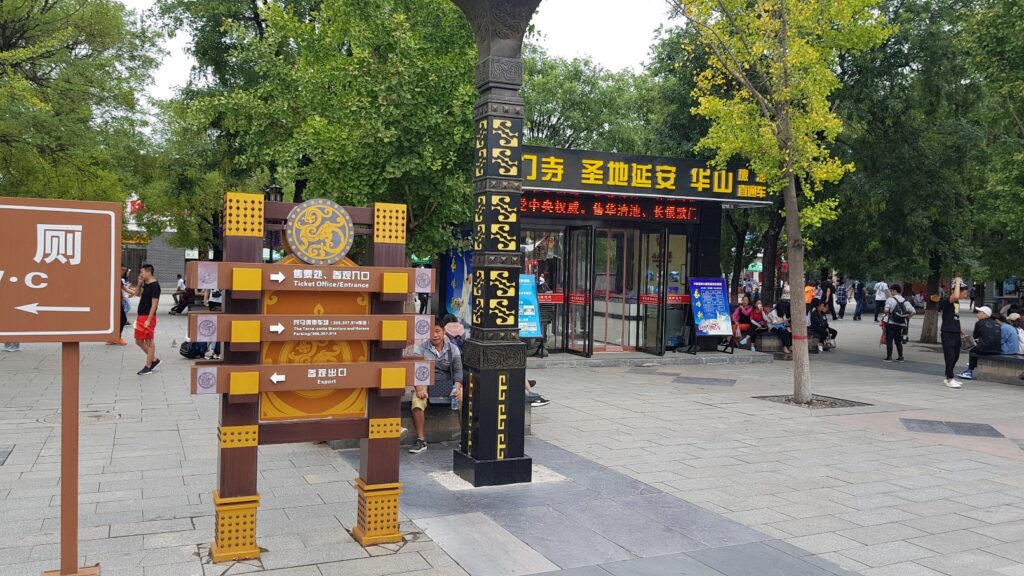
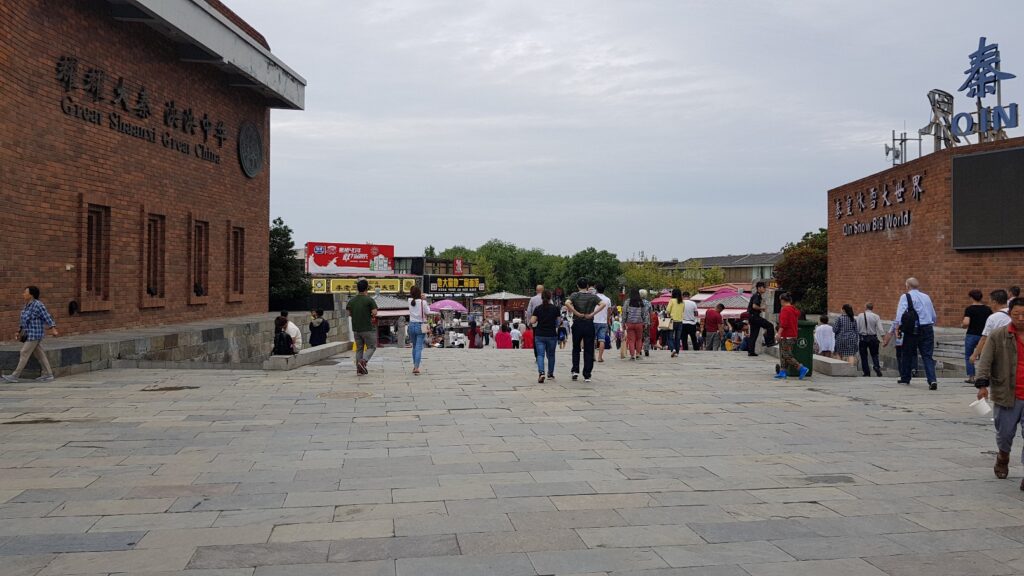
Layout of Terra-cotta Army

In the relic site, there are total 4 underground pits found and named Pit 1, Pit 2, Pit 3 and Pit 4 according to the unearthed sequence. Pit 4 has not been excavated and keeps empty. The other three pits were built with similar underground earth-and-wood structure but differed in layout. There are five sloping passages with clear trail of wheels on it around the pit. The terracotta figures were placed into the pottery-bricks-paved pit through the passage, then filled with rammed-earth and obturated the passages by stumpage. The pit sustained wood roof that was composed of huge and solid rafters, then covered by layers of fiber mats and earth. An underground military stronghold was finished.
Terracotta Museum

The Terracotta Army is a collection of terracotta sculptures depicting the armies of Qin Shi Huang, the first Emperor of China.
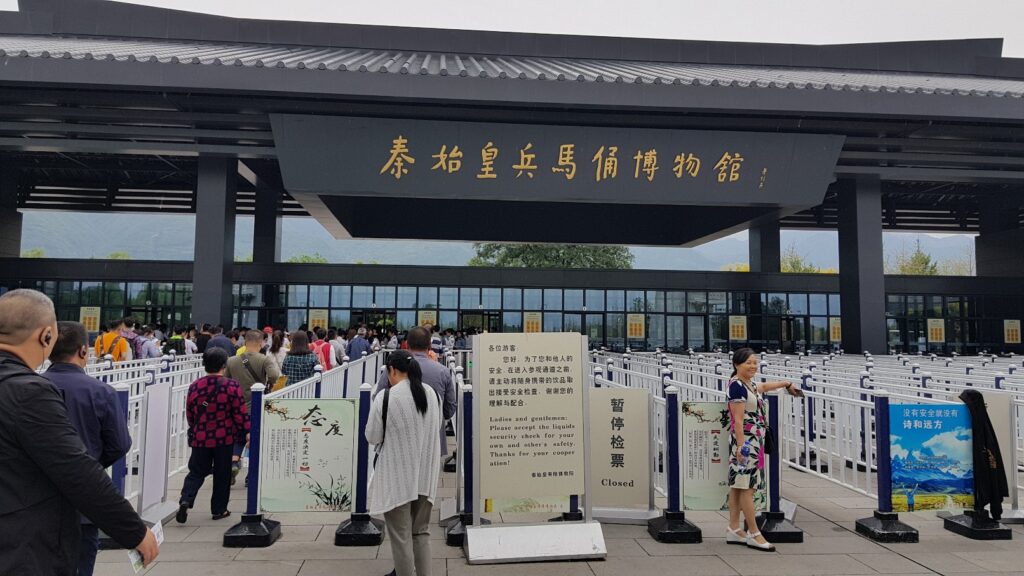


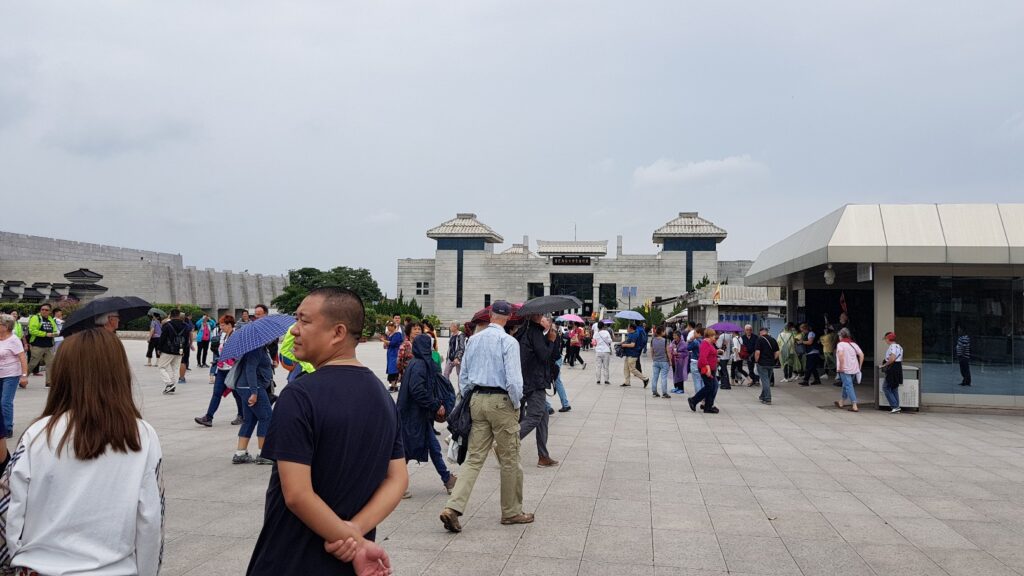
Bronze Chariots and Horses Exhibition Hall

Two large scale-models of bronze chariots came unearthed in December 1980 and opened on October 1st, 1983, about 20 m (65.62 ft) east of Emperor Qin Shihuang’s mausoleum. They were tagged Chariot No. 1 and No. 2 respectively. Bronze Chariots and Horses are the biggest items of bronze ware ever found in the world.
These were encased in the large wooden coffins for over two thousand years without any corrosion. These are half size scale-models of real chariots, faithfully copied down to the very details, complete with horses and people. No. 1 bronze chariot was the leading chariot of Emperor Qin Shi Huang with 2.25 m (7.38 ft) long and 1 m (3.28 ft) tall. No. 2 was the seat of Emperor Qin Shi Huang with 3.17 m (10.4 ft) long and 1 m (3.28 ft) tall. The technology and design have high quality that almost close to the technology we used today.



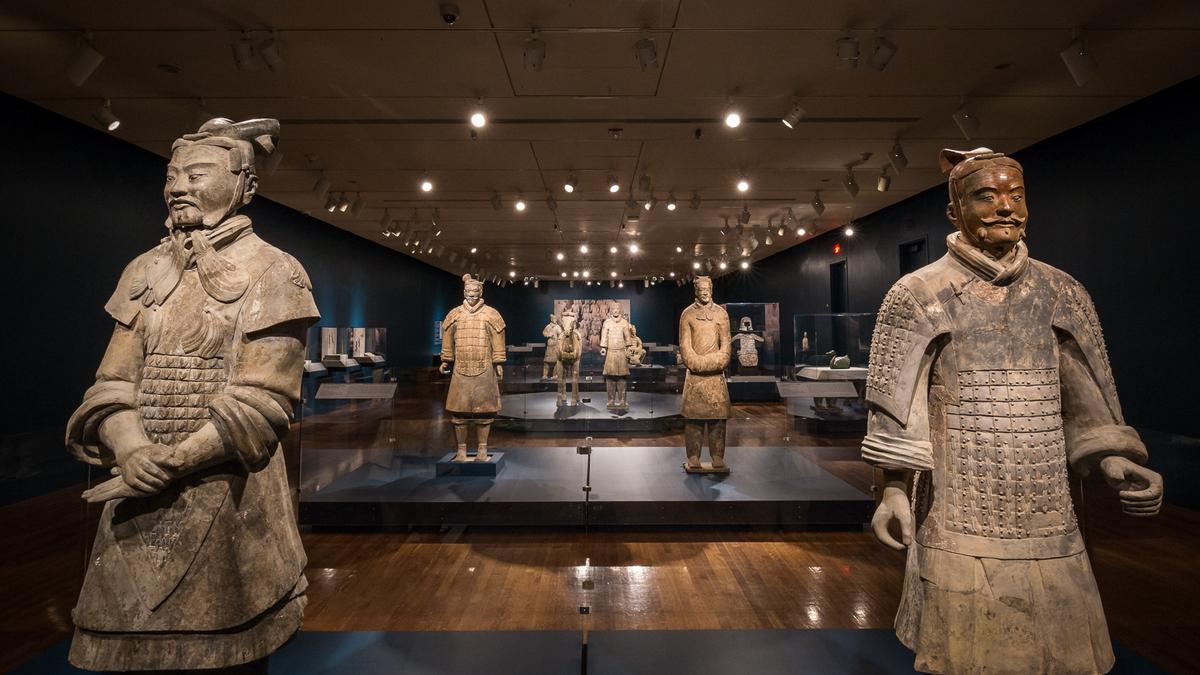


Vault 1


The central part of Pit 1 is the main force of army which has 36 columns warriors with 178 m (584 ft) long. Totally owns 50 battle chariots and 4000 infantries, they stood in a good order according to the military formation. Some warriors wore robes, some wore armors, all of this were according to their rank or army services. Meanwhile, each battle chariots equipped with three warriors, one was the horse drive and other two were the warriors with weapons in hand.


![20180905_143146_copy_1612x907[1]](https://hobbymart.net/wp-content/uploads/2022/02/20180905_143146_copy_1612x9071-768x432.jpg)
![20180905_143838_copy_1612x907[1]](https://hobbymart.net/wp-content/uploads/2022/02/20180905_143838_copy_1612x9071-768x432.jpg)
![20180905_143757_copy_1612x907[1]](https://hobbymart.net/wp-content/uploads/2022/02/20180905_143757_copy_1612x9071-768x432.jpg)
![20180905_143802_copy_1612x907[1]](https://hobbymart.net/wp-content/uploads/2022/02/20180905_143802_copy_1612x9071-768x432.jpg)
![20180905_143838_copy_1612x907[1]](https://hobbymart.net/wp-content/uploads/2022/02/20180905_143838_copy_1612x9071-1-768x432.jpg)
![20180905_143322_copy_1612x907[1]](https://hobbymart.net/wp-content/uploads/2022/02/20180905_143322_copy_1612x9071-768x432.jpg)
Vault 2
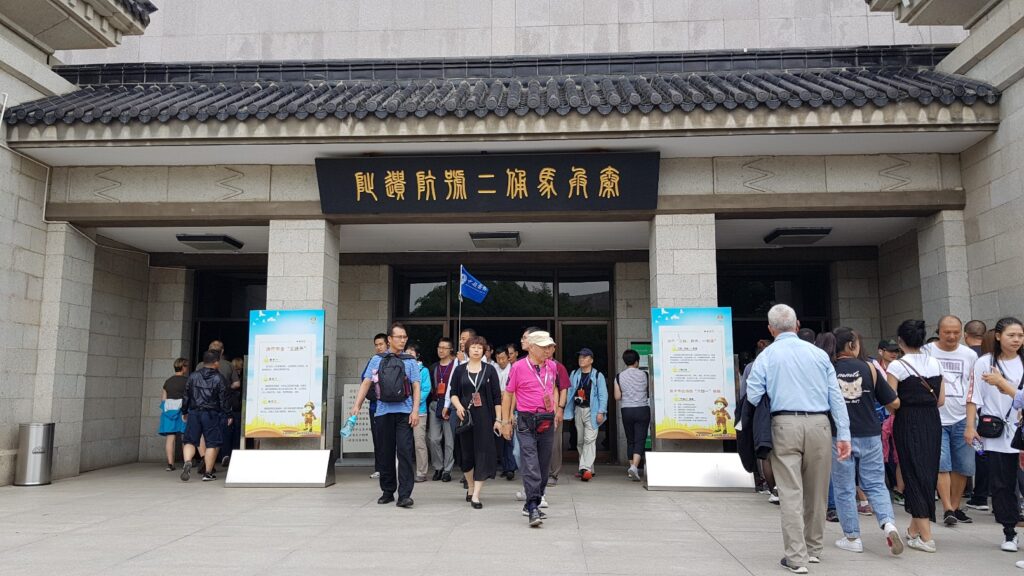
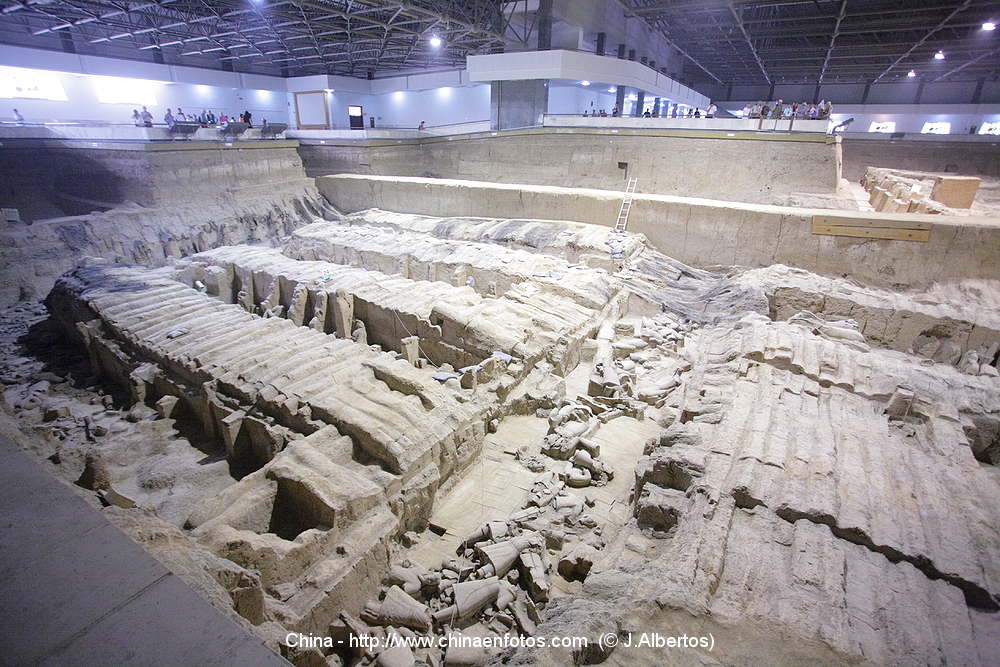
Compared to Pit No.1, the combat formations in Pit No.2 are more complex, and the units of armed forces are more complete. Pit 2, is 96 m (315 ft) long and 84 m (276 ft) wide that consists of four units contain various types of troops, including cavalryman, archer, chariots and infantry, which display extremely according to the military formation. The most important section is at the eastern end of the pit with 60 archers surround the main force in standing position. The main force in the middle is comprised of 160 kneeling or squatting archers. Archers is a special arms of services for the terracotta figures. Figures engaged in this service armed with bow and arrow and arrayed together. One valuable point in the sculpture art is the fine stitches in the sole of the shoes by the craftsmen, reflecting a strict spirit of realism and giving posterity viewers a strong sense of life. It convinced that tell us how the standing archers and kneeling archers coordinated with each other when the enemies attack.

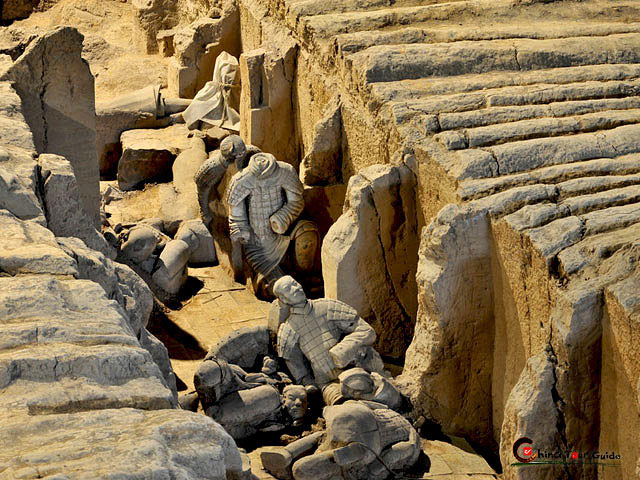
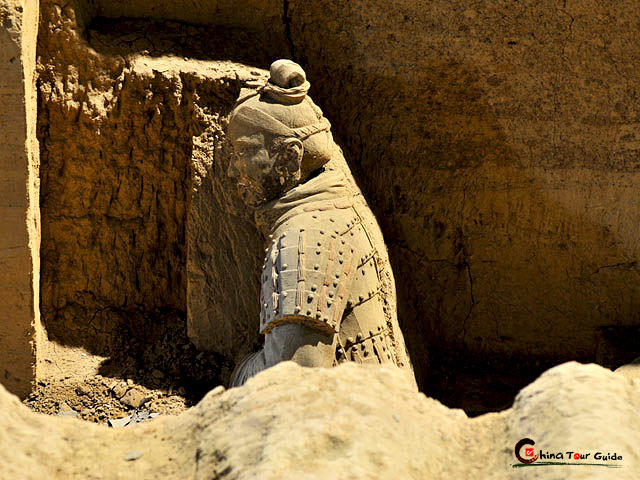
Vault 3

As the smallest pit, Pit 3, with high-ranking officers and a war chariot. Outwardly, military officer figures are capped by double or single board hat in various armors. Apart from the difference in clothes, the military officer figures are somewhat different in spirit and bearing of the general figures. Not as big and strong as that of the general figures, the military figures are tall on the whole, with broad shoulders, erected chest and solemn look, showing their quality in diligence thinking and courageous ability all the more.
On the 11th May in 1976, archaeologists discovered Pit 3 in northwest of Pit 1. As the smallest one, Pit 3 is the command post which vary from both pit 1 and pit 2 in structure and content. It can divided into three parts – north, central and south. In the center, it is a battle chariot with four horses and four warriors. There are also 64 warriors with heavy armor standing in both north and south.



Unearthed Bronze Weapons
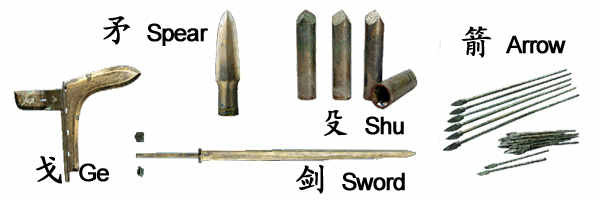
Approximately 40,000 bronze weapons have been unearthed from the terra-cotta pits, such as Ge, spear, halberd, Pi, Shu, battleaxe, sword, hook, bow, crossbow, arrowhead, etc. These weapons were exquisitely made through the processes of modeling, molding, casting and finishing, The surface of some weapons were plated with chrome-saline oxide coating, which has protected the sharpness of the weapons, this made them look as shiny as new when they were unearthed. Different proportion of the elements of the alloy was regulated for making different weapons. All these demonstrate that metallurgy of Qin ear reached a high level and the manufacture of weapons started to be standardized.
The Mausoleum of the First Qin Emperor
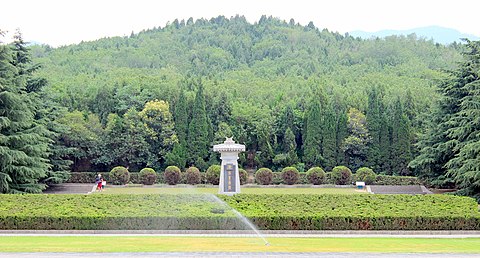
Located in Lintong District, Xi’an, Shaanxi province of China. This mausoleum was constructed over 38 years, from 246 to 208 BC, and is situated underneath a 76-meter-tall tomb mound shaped like a truncated pyramid.
The main tomb is not far from the excavated Terracotta Warriors and still remains relatively intact. The famous Chinese historian, Sima Qian, bewrited that the tomb includes replicas of palaces and scenic towers, rare utensils and wonderful objects, 100 rivers made with mercury, representations of ‘the heavenly bodies’, and crossbows rigged to shoot anyone who tried to break in. Modern archaeologists have discovered many evidences to testify the truth of the legend, while the Terracotta Army was one of the evidences. Most of the workmen died from exhaustion or were killed for secrecy reason after finishing their work.



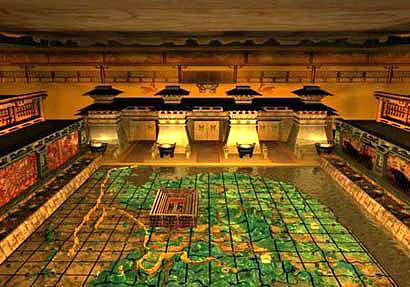
More Blogspot


The terracotta figure
The terracotta figures are life-sized, typically ranging from 175 cm (5.74 ft) to about 200 cm (6.6 ft) (the officers are typically taller). They vary in height, uniform, and hairstyle in accordance with rank. Their faces appear to be different for each individual figure; scholars, however, have identified 10 basic face shapes.




